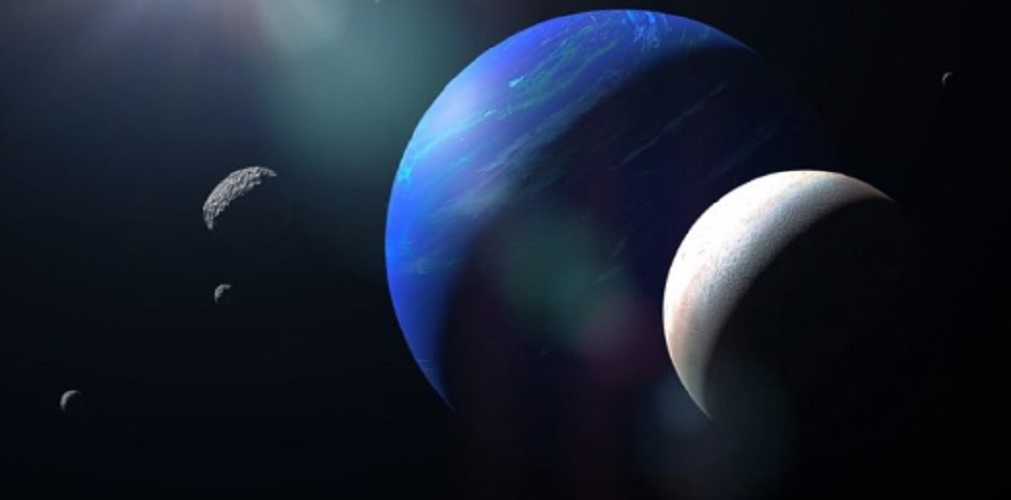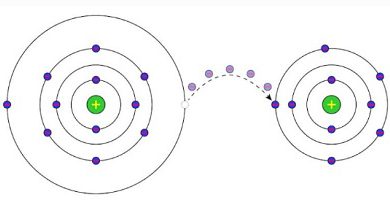What is the planet Neptune?
We explain everything about the planet Neptune, its discovery, structure, atmosphere and climate. In addition, its rings and satellites.
-
What is the planet Neptune?
Neptune is the eighth planet in the Solar System counting from the Sun , and the fourth largest. It is part of the so-called outer planets, or gaseous planets. It has 5 faint rings composed of dust and rocks, 14 satellites or “moons” and its mass is equivalent to 17 times that of the Earth.
Neptune is at a distance of 4.03 hours from the Sun at the speed of light , and is the farthest planet from the luminous star . It takes 16 hours to complete its rotation movement (Neptunian day) and 165 Earth years to complete the orbit around the Sun (Neptunian year). In 2011 he completed his first orbit since his discovery in 1846.
In astrology, Neptune represents a “spiritual” or “inspiration” planet, and is identified with the symbol ♆, a trident in honor of the god of the sea and the ocean . Hence the origin of his name by the Roman god “Neptune” (the same god that the Greeks called “Poseidon”).
-
Neptune’s discovery
Neptune was officially discovered on September 23, 1846 , and was the first planet located through mathematical predictions instead of astronomical observations of the sky.
Around 1839 the French astronomer and mathematician Urbain Le Verrier (1811-1877) undertook a vast mathematical study that allowed him to establish all the variations of the orbits of the planets of the Solar System. He could see that planetary orbits behaved in accordance with Kepler’s laws and Newton’s gravitational theory, but there was an exception: the planet Uranus.
This exceptional characteristic of Uranus led Le Verrier to hypothesize the existence of an unknown planet and that only such a gravitational influence could explain Uranus’ irregular behavior.
Taking as a starting point the disturbance of the orbit of Uranus, Le Verrier was able to calculate where the unknown planet should be during a precise calendar date.
Le Verrier then asked the German astronomer Johann Gottfried Galle to help him confirm his prediction using the Berlin observatory telescope . It was there, during the night of September 23, 1846, that Galle’s assistant, Heinrich Louis d’Arrest, was finally able to observe the planet we know today as Neptune.
-
Neptune structure

The internal structure of Neptune is similar to that of its neighboring planet, Uranus. It has a rocky core covered by an icy mantle, which is in turn under a thick and thick atmosphere:
- Core . The nucleus of Neptune is composed of iron, nickel and silicates with a mass greater than the nucleus of planet Earth . The pressure in the center of the nucleus is approximately double that in the center of our planet.
- Manto . The mantle of Neptune equals about 15 times the mass of our planet and is a vast ocean of water , ammonia and methane. A very curious feature of this mantle is that at a depth of 7000 kilometers, methane decomposes into diamond crystals that rain in the direction of the solid core like a kind of hail. Neptune is a planet where diamonds literally rain.
- Atmosphere . The atmosphere of Neptune is composed of hydrocarbon gases such as methane, ethane and acetylene. It is subdivided into two main regions: the lower region (troposphere), where the temperature decreases with altitude , and the upper region (stratosphere), where the temperature increases with altitude.
-
Atmosphere of Neptune
The atmosphere of Neptune was formed from ice and complex molecules , unlike Saturn and Jupiter, which were formed from simple molecules (such as hydrogen and helium).
The atmosphere of Neptune is similar to that of Uranus, as it presents more complex molecules such as methane gas, ethane gas, acetylene and diacetylene. These gases form fog veils at a high altitude in the upper atmosphere , and clouds of icy methane in the lower parts of the atmosphere.
In 1989, the Voyager 2 space probe discovered a “big dark spot” (similar to Jupiter’s “red spot”), a huge storm surrounded by white layers of frozen methane. The most recent views of Neptune from the Hubble Space Telescope indicate that the stain has disappeared over time.
-
Neptune Weather
The climate of Neptune is characterized by average temperatures of -353º F (-214º C) and huge storms with winds up to eight times stronger than the most powerful hurricane ever recorded on our planet.
These supersonic winds can reach 2000 kilometers per hour, equivalent to the maximum speed of the F / A-18 Hornet, one of the fastest fighters of the US air force.
Neptune is so far away that it receives a thousand times less sunlight than Earth . It is still a mystery how Neptune obtains energy for such intensity of climate, although it is believed to be due to the great internal heat of the planet (Neptune radiates 2.61 times more energy than it receives from the Sun).
-
Neptune satellites

So far , 14 Neptune satellites are known that have been baptized with names of minor deities of Greco-Roman mythology. The most important is Triton , which has 99% of the mass in orbit around Neptune.
Triton was discovered by Briton William Lassell (1799-1880) a few days after the discovery of Neptune and it is the only satellite large enough to have a spheroid shape.
The fact that Triton possesses a retrograde orbit (contrary to clockwise) indicates that it was a planet “captured” by Neptune. This satellite is the coldest known object in the Solar System (-198º C) and on its surface are ice volcanoes or cryovolcanoes.
Other satellites are Nereida (discovered in 1949), Larissa (discovered in 1981), Náyade, Talasa, Despina, Galatea and Proteo (discovered in 1989 thanks to the overflight of the Voyager 2 space probe), Halímedes, Sao, Laomedeia, Psámate and Neso (discovered between 2002 and 2003) and Hippocampus (discovered in 2013)
-
Neptune Rings
Neptune’s rings were discovered in 1984 and are named after astronomers who made important contributions to the knowledge of the planet. These rings would have formed when one of the moons of Neptune was destroyed.
These are very thin rings because they are mainly composed of dust and rock (which do not reflect good amounts of light). They are much darker than Saturn’s rings (which are mainly composed of ice, and do reflect a lot of light).
Neptune’s rings fall into two categories: on the one hand the inner rings called Galle, Le Verrier, Lassell and Arago, and on the other hand the Adams ring, which is the only outer ring. Adams is also distinguished by having five arches brighter than the rest of the ring, called Courage, Freedom, Fraternity and Equality 1 and 2.





